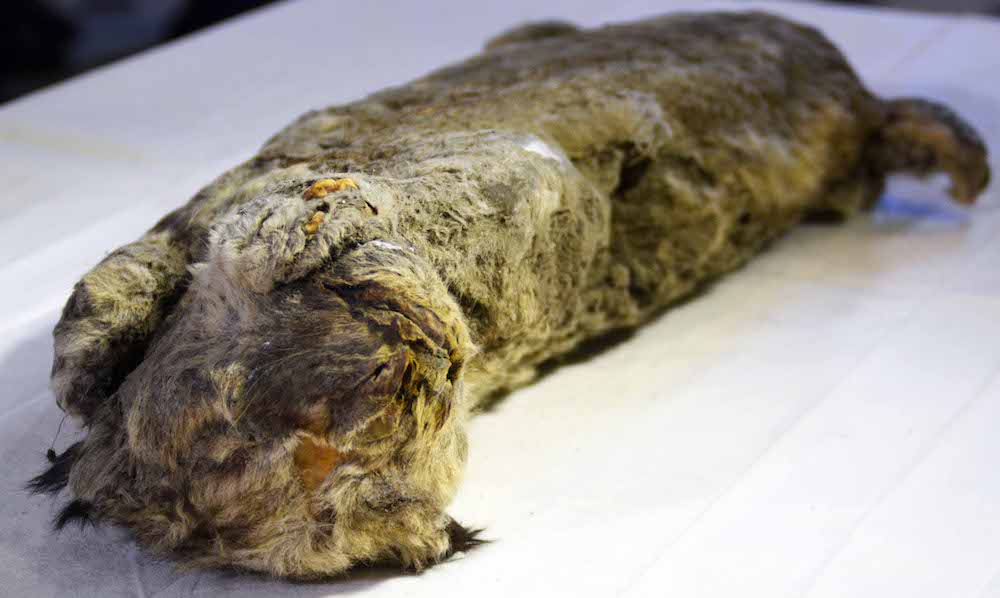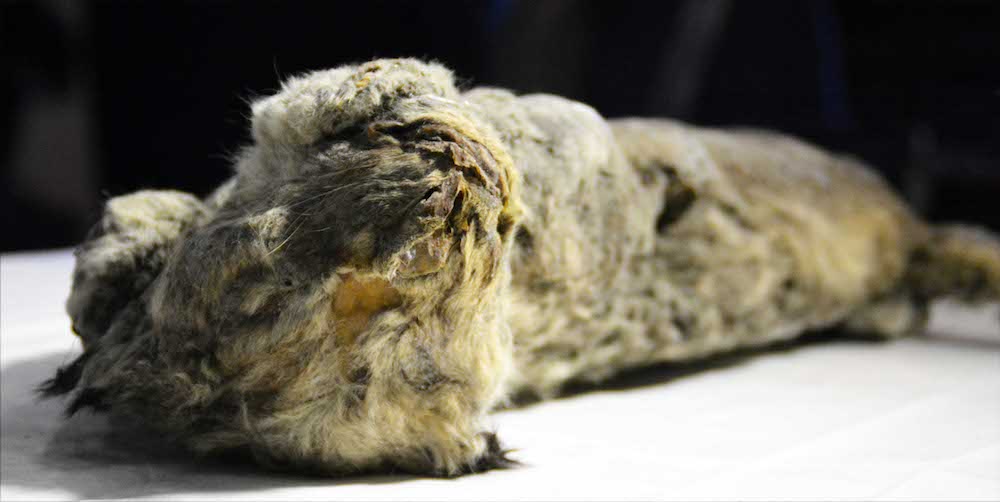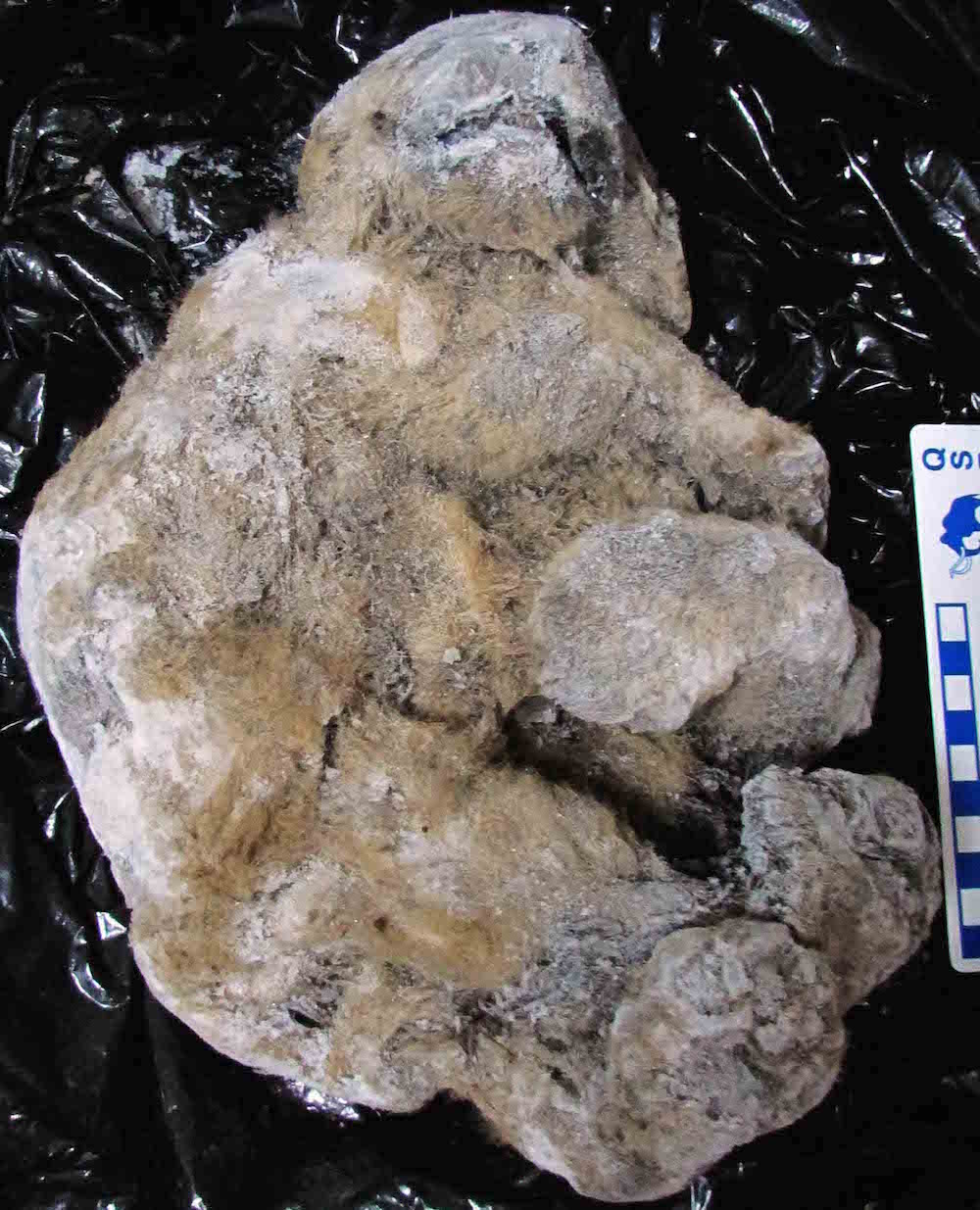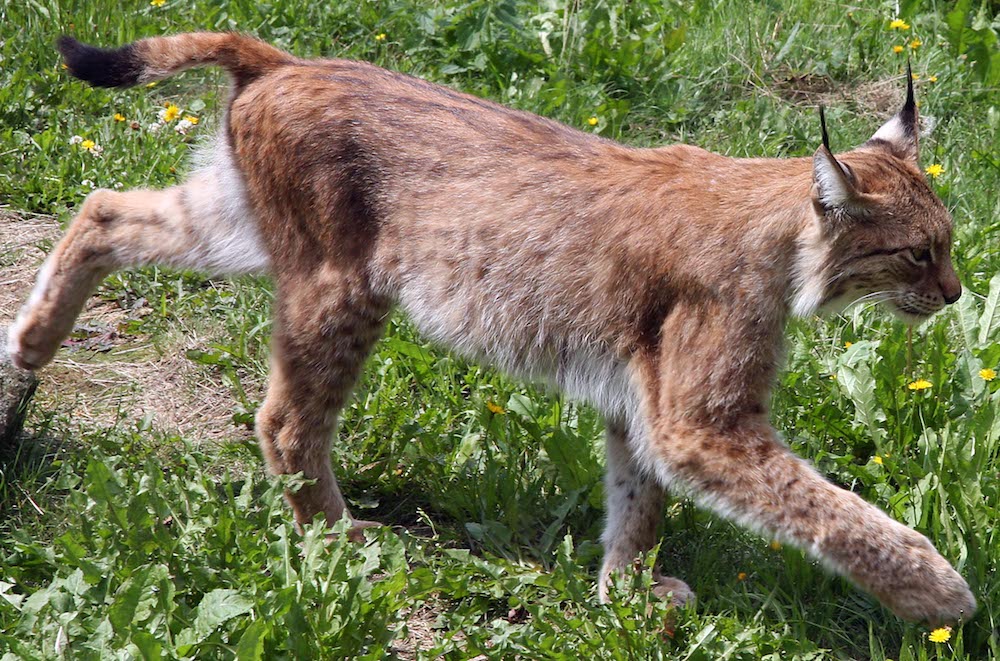Cave Lion Mummy May Not Be What It Seems

A Russian man hunting for mammoth tusks in Eastern Siberia made an unexpected discovery in September: the incredibly furry, slightly squished mummy of a cat from the last ice age. Scientists are celebrating the rare discovery, but they're not certain on one major point — whether the mummy is a cave lion cub or a lynx kitten, paleontologists told Live Science.
If the kitten is a lynx, it would be only the second species of its kind from the last ice age to be uncovered in Beringia, a region encompassing parts of Russia, Alaska and Canada, said Olga Potapova, the collections curator and manager at the Mammoth Site of Hot Springs, South Dakota, who is helping with the logistics of studying the new specimen.
People have spent at least 300 years collecting and studying frozen bones and mummies in Eastern Siberia, and "that yielded just one fossil bone of this [lynx] species," Potapova told Live Science in an email. So, "the find of the complete mummy of this species would be very surprising and interesting," she said. [Photos: Is Ice Age Cat Mummy a Lion or a Lynx?]
Astonishing discovery
Boris Berezhnev discovered the ice age kitty by the Tirekhtykh River (also spelled Tirekhtyakh) in Eastern Siberia's Yakutia, a region about the size of India that has a population about equal to that of Delaware. Upon finding the furry, frozen mummy, Berezhnev's boss notified scientists at the Academy of Sciences of Yakutia, who went to see the mummy at the academy just a few days later.
The scientists have had precious little time to study the mummy: They still don't know how long ago it lived, whether it's male or female and — of course — whether it's a lion or a lynx, although new observations suggest it's the latter, Potapova said.
But it's a safe bet the mummy dates to the Pleistocene, an epoch lasting from about 2.6 million until about 11,700 years ago.
If the mummy is a cave lion, "we believe that this find dates to the Late Pleistocene, considering the fact that the cave lions went extinct together with the woolly mammoths," Albert Protopov, who is head of the Mammoth Fauna Studies Department at the academy and is studying the feline, told Live Science in an email, as translated by Potapova. [See Images of Preserved Baby Woolly Mammoths]
Sign up for the Live Science daily newsletter now
Get the world’s most fascinating discoveries delivered straight to your inbox.
Protopov had nothing but praise for the newfound mummy, which is in remarkable condition, he said.
"The mummy is 100 percent complete and the hair is perfectly preserved," Protopov said. "The hide of the new mummy is just beautiful — it has predominantly gray coloration flecked by black guard hairs [the longer hairs on an animal's pelt]. The hair on the head has many black spots."

If it's a cave lion, the size suggests the little cub was probably between 1.5 months and 2 months old when it died, "probably due to collapse of the den," Protopov said, noting that "the mummy’s body is deformed, and its head is flattened" from being crushed over time.
The last known cave lion (Panthera spelaea) lived about 14,000 years ago in what is now Alaska, Potapova previously told Live Science. Genetic studies show that P. spelaea and the modern African lion (Panthera leo) are sister groups that diverged to become separate species about 1.9 million years ago. In turn, about 300,000 years ago, the cave lion gave rise to the American lion (Panthera artox), which lived only in North America and has since gone extinct, Potapova said.
Uyan and Dina

The mummy is the third ice age cat recently discovered in Yakutia. In 2015, two mummified cave lion cubs were found on the banks of the Uyandina River. Researchers named them Uyan and Dina, and speculated that the cubs were merely a week old when their den likely collapsed and killed them.
Like Uyan and Dina, the newfound cat was found in permafrost. When the dens of these young cats collapsed, "the instant burial secured preservation of the hides with hair," said Potapova, who studied the cave lion cubs with a team of researchers, including Protopov.
"The constant permafrost temperature and lack of oxygen prevented decay of the bodies for thousands of years," she added.
Both the modern African lion and the modern Eurasian lynx (Lynx lynx) make underground dens, where they nurse and raise their litters, Potapova said. "It is likely that in the Pleistocene, the dens were similarly important for the cave lions and the Eurasian lynx to protect their youngsters," she said.
That said, the clue that the newfound cat likely lived in a den doesn't help solve the mystery of its species. But Potapova said that the proportions of its body and color of its coat suggest that it might be a European lynx. If that's the case, the kitten was likely between 4 and 6 months old when it died, she said. [Photos: 9,000-Year-Old Bison Mummy Found in Siberia]
The Eurasian lynx appeared relatively late in the Pleistocene record, about 130,000 to 120,000 year ago, Potapova said. The cat is an ambush predator that Potapova calls the "coyote of the forest." It somehow survived the end of the last ice age, when countless megafauna (animals weighing more than 100 lbs., or 45 kilograms) went extinct, including the mammoths, short-faced bears, saber-toothed cats and ground sloths.

Is cloning possible?
Despite other news reports, it would be extremely challenging to clone the newly discovered kitty.
"I believe that the preservation of the DNA exceeds the quality of the Uyan and Dina’s DNA, but I do not think the cloning is possible," Protopov said.
"The cloning technology here is useless because it requires a living cell or living soft tissues, which are far gone in mummies that are thousands of years old," Potapova added.
However, any genetic information researchers can find will be of use, especially if it's a lynx. Genetic data from the mummy would add to science's very limited knowledge on the genetic diversity of the Pleistocene lynx, "especially from this part of Siberia," where lynx remains from the last ice age are rare, Potapova said. [6 Extinct Animals That Could Be Brought Back to Life]
If the technology ever gets there, researchers could reintroduce this genetic diversity back into modern lynxes, Potapova said. But that likely won't happen anytime soon. "Our kids or grandkids would be likely able to watch," Potapova said.
Original article on Live Science.

Laura is the archaeology and Life's Little Mysteries editor at Live Science. She also reports on general science, including paleontology. Her work has appeared in The New York Times, Scholastic, Popular Science and Spectrum, a site on autism research. She has won multiple awards from the Society of Professional Journalists and the Washington Newspaper Publishers Association for her reporting at a weekly newspaper near Seattle. Laura holds a bachelor's degree in English literature and psychology from Washington University in St. Louis and a master's degree in science writing from NYU.










